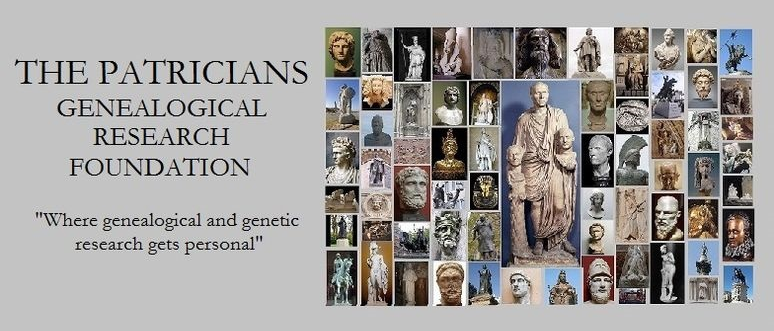






King Henry VIII Tudor (1491 – 1547) claimed he was a direct descendant of King Arthur Pendragon. It fulfills Merlin’s prophecy that Arthur was the “once and future King” after he discovers the lad with Excalibur in hand. Nearly a millennium after Arthur’s death, King Henry VII successfully claimed the British Throne for the House of Tudor in 1485.
The Camelot saga as we know it today was first written by 12th-century Welsh cleric and historian Geoffrey of Monmouth (fl. 12th century). In Historia Regum Britanniae (History of the Kings of Britain), he describes the life and times of Arthwyr Pendragon and his royal court at Avallon. Whether or not such characters ever existed, in reality, continues as a scholarly polemic. My opinion is that Geoffrey ascribed attributes of several heroic personages to developing the King Arthwyr character, possibly in taking more than a bit of poetic license on behalf of monarchal image development. Curiously, the medieval Catholic Church allowed the circulation of the ecclesiastically heretical story, as judged by instances of black magic and gratuitous commission of cardinal sins, so perhaps the monarchy was more than complicit in that regard. Moreover, associating the well-being of the land (kingdom) as directly dependent on the well-being of the monarch was a clever touch as well. Nevertheless, Geoffrey can’t be faulted for poetically embellishing his legendary Arthur as it made for a superb propaganda vehicle for the times and thereafter, and many weavers of legend, such as Snorri Sturluson (1179 – 1241) Icelandic Poert, Author of the “Prose Edda”, took it upon themselves to similarly portray heroic personages of legend many centuries after their putative demise (although Snorri was well-versed of his related genealogy from a personal standpoint).
As told by Sir Thomas Malory (1415 – 1471) in his book Le Morte d’Arthur, the Arthurian legend continues to hold a preeminent place in British mythology. William Caxton produced the first print edition of the chivalric romance in 1485, the same year Henry VII Tudor was crowned king. Undoubtedly, his son King Henry VIII would have found it a riveting read, particularly because it conformed to his narrative concerning the Tudors’ claim on monarchal succession (which was hotly disputed as evidenced by the War of the Roses and several conspiracies to depose them after they took control of the monarchy through pure stealth and immense wealth (Richmond was by far and away the richest noble in Europe at the time).
Penned under the supervision of Sir Walter Raleigh (1554 – 1618), Edmund Spencer’s The Faerie Queen reflects a phantasmagoric image of Queen Elizabeth’s royal court that fits in well with the magical backdrop and chivalric thematic elements such as Malory portrayed in Le Morte d’Arthur.
According to several genealogies, King Arthur was a direct descendant of the Fisher Kings (a.k.a. Desposyni). They were the agnatic descendants of the marital union of Lord Jesus and Mary Magdalen (3 – 63 AD). Arthur’s mother, Ygerna, was an agnatic descendant of this “legendary” royal lineage, and, accordingly, a cousin of Swan Knights Sir Lancelot and his son Sir Galahad, a Fisher King and guardian of the Holy Grail. The Catholic Church has never recognized the legitimacy of their offspring, so it’s understandable that Henry VIII, one of their descendants, had reason to legitimize it through his establishment of the Church of England with him as the Supreme Head.
Of the dozen or so candidates for the “real” Arthur of Camelot (see Genealogies of Camelot Myth, only one in my mind stands out as being a clear-cut choice. Prince Artur of Dál Riata (about 565 – ), Scotland, flourished about the same time as Arthur Pendragon. An agnatic descendant of Irish High Kings (one of which being the legendary Niall Noígíallach of the Nine Hostages, (380 – 454), his agnatic grandmother was of Welsh royalty (the primogenitor of which being Cunobelinus or Cymbeline, 1st Pendragon, King of Briton (25 BC – 41 AD)). Like Arthur, who’s named as his half-brother in several pedigrees, Prince Artur also commanded an army comprised of Welshmen and Scots in the war against Saxons and Picts. The argument is advanced in David F. Carroll’s book Arturius – The Quest for Camelot (1996). However, in light of a more advanced genealogy for Arthur, as previously mentioned, the argument fails to supersede all others of a speculative nature.
There’s scholarly evidence that the earliest versions of the Holy Grail legend may have originally emanated from Ireland (perhaps through Celtic France where it took various forms as a shamanic talisman). In Ireland and the Grail, John Carey develops the hypothesis in the study of Old Irish manuscripts, such as those derived from the lost Book of Druimm Snechtai. So, rather than being an exclusively Welsh story, it may have been conveyed to Wales by Irishmen with Welsh/Bretagne/French ancestral backgrounds.
He’s ranked #451 in Hart’s Most Influential People in History – Top 500 List (125).
Related ancestral blog articles
Snorri Sturluson (1179 – 1241) Icelandic Poert, Author of the “Prose Edda”
Elfhere Scylding “Beowulf”, King of Geatland (526 – 620)
Arthur Pendragon, King of Britons
Birth 480 in Tintagel Castle, Cornwall, England
Death 537 in Battle of Camlann
Agnatic descendant of Aeneas the Dardanian, King of Latium (1245 – 1175 BC) Founder of Alba Longa, Brutus of Troy (1150 – 1091 BC) 1st King of Britons, Eponymic Founder of Britain and Conan Meriadoc ap Gereint (305 – 367) King of Dumnonia, 1st Duke of Brittany
Ancestry.com citation – Lineages
42nd great-uncle …MORGAN-BOWLES-VAN NUYS-TERHUNE-BANTA-BRINKERHOFF-OUTWATER-COLLINS
44th great-granduncle …HASTINGS-HERON-COLLINGWOOD-COLLINS
2nd cousin 48x removed …ROHAN-CYR-BRULE
3rd cousin 54x removed …HOWARD-WOOD-COLLINS
SOURCES
ARTHUR’S ANCESTORS & DESCENDANTS
France stakes strong claim to King Arthur
The Pendragon Cycle: Taliesin; Merlin; Arthur
Avalon: The Return of King Arthur
King Arthur Pendragon: Epic Roleplaying in Legendary Britain
Unraveling the Mysteries of Glastonbury
The Patricians, A Genealogical Study – Ebook Editions US$5.95


Steven Wood Collins (1952 – ) Antiquarian, Genealogist, Novelist

